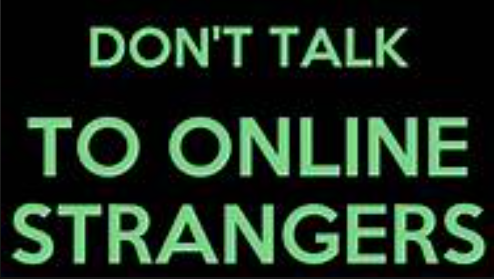By Beth Gore, Executive Director of the Oley Foundation
Have you ever
pondered this?
Conferences are basically telling people “Don’t talk to
strangers” and “Don’t give information to people on the internet” to “come meet
them in person instead!”
Confession 1: some of my best friends and confidants were strangers I found online and then met at a conference. For decades, I was a speaker at conferences. Many times I was the top-billed or keynote speaker. There’s something electric about standing in front of a crowd and making them laugh, cry, learn and be inspired. I’d talk to a million people, visit the exhibit hall and go home. Brain full and feet tired.
Confession 2: unless I was a paid speaker, I didn’t attend conferences. Ever. I just didn’t get the purpose. I would often look at the list of topics and think “that’s a webinar I can get from the comfort of my own house”. And “attending is expensive and taking time away from my family why bother?” I missed the point entirely.
For a long time.
It took me working for an organization that out on an annual
conference (read: I was forced to go) to finally get it. And now as an Executive
Director of an organization, I find myself trying to convince people to take a
chance and “just go”. It’s that initial inertia we all have to overcome.
For our
organization, there are extra barriers. We represent a group of patients who
are quite medically complex, often very ill and barely coping with day to day
life health wise. Then throw in it’s an expensive life we live, with many
things not covered by insurance. And then we ask them to travel across the
country. It’s both hard and expensive. And yet we believe it’ll be worth it.
Click HERE to learn more about Oley, the Nutrition Support community. Basically - Tube Feeding and IV Nutrition.
So here’s what I wish I understood sooner in my own journey:
1. Thought leaders of the
discipline are there, in the flesh, and ready to exchange ideas. People you’ve
just read about in articles are accessible and getting coffee from the same
pot.
2. Best practices or the
latest research are often shared. It can take a decade or more to get from
cutting-edge ideas to practice. So hearing it at a conference is putting me
often 10 years or more ahead of the current practice and literature. Especially
in the rare disease and complex care space, this could be life-saving
information.
3. Innovative
products/services are all in one place. What’s the latest and greatest gadget?
What’s the product I’ve heard about feel like? I can ask questions and maybe
offer suggestions.
4. Shared journey means
sitting at a lunch table or taking an elevator ride with people who are
experiencing a similar journey as mine. In my regular life, I often feel the
only proverbial salmon swimming upstream. But at a conference, I’m with “my
people”. Little to no explanation needed, they just “get it”. It’s empowering
and weirdly comforting to know I’m not alone.
5. Collective expertise is at
my fingertips. As a newbie to a journey, I can tap into and absorb this. As an
experienced person, I’m able to pass along the lessons learned. Maybe those
scars were worth something to someone else’s journey and just maybe I can
lessen their scars.
In the end, even all of
these things boil down to one thing: a sense of belonging. I’m able to feel and
see I’m part of something bigger: COMMUNITY.
I muster the strength, close my
eyes and go on blind faith that I’ll find the fuel I need to continue to fight
the fight for another year. That I will find the people I’m going to need for
the next year when I’m weary from the journey.
If you’re ever on the fence if
the money and effort and time are worth it, especially if you feel alone and
isolated and weary from the fight, take a chance. If you’re anything like me,
your only regret will be that you didn’t do this sooner.
To learn more about our
upcoming conference: https://oley2024.vfairs.com/en/
The Oley Foundation is a 501c3 non-profit home nutrition therapy community and advocacy group.
Mission: To enrich the lives of those living with home IV nutrition or tube feeding through advocacy, education, community and innovation.
Vision: Oley envisions a world where patients are united, supported and empowered to thrive on home nutrition support.






















